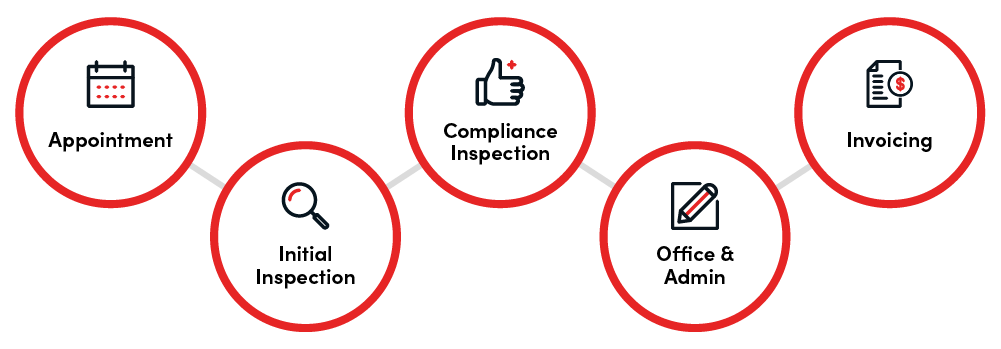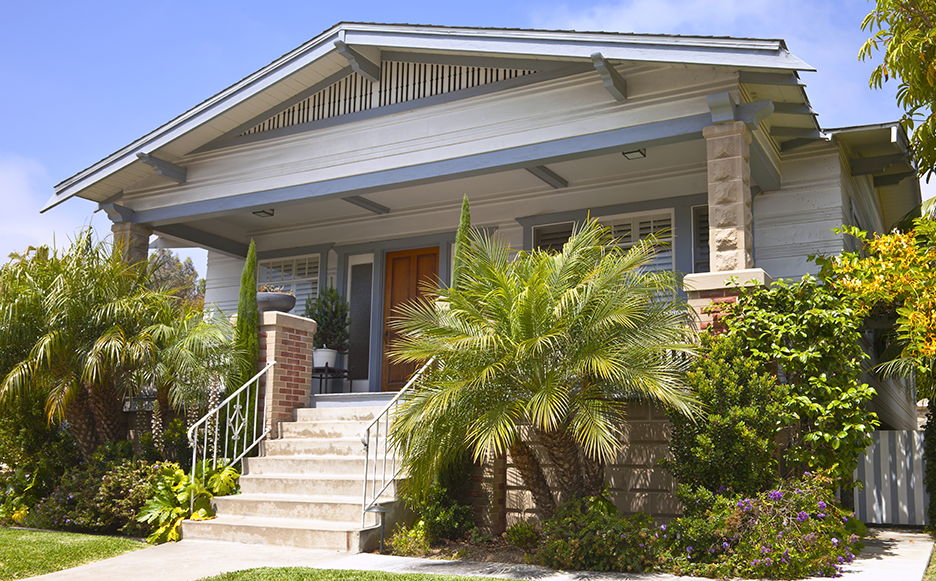Fire officials and community leaders have taken notice of a new state mandate in California called Assembly Bill 38 (AB 38), a multi-dimensional bill aimed at improving fire prevention management and proactive homeowner education.
According to The Department of Forestry and Fire Protection (CAL FIRE), more than two million California households and approximately one in four residential structures are either located within or near “high” or “very high” fire hazard severity zones.
Against that massive backdrop, local fire agencies are looking for ways to efficiently manage AB 38 mandates – from required inspections and administrative tasks to citizen communications and education. Let’s review the key details and processes fire prevention leaders in California need to be aware of with AB 38.
The Basics of California Assembly Bill 38 (AB 38) for Local Fire Agencies
As of July 1, 2021, AB 38 states the seller of a residential property located in specified zones must submit documentation of compliance with locally adopted defensible space requirements prior to the close of escrow. CAL FIRE suggests property owners or their agents contact their local fire department to find out whether the property requires an inspection.
If the property is within the State Responsibility Area (SRA), an AB 38 defensible space inspection is required in both the High and Very High Fire Hazard Severity Zones. If the property is within the Local Responsibility Area (LRA), an AB 38 defensible space inspection is required only in the Very High Fire Hazard Severity Zone, at this time.
With AB 38, if documentation showing compliance cannot be obtained by the close of escrow, the seller and buyer can enter into a written agreement showing that the buyer agrees to obtain documentation of compliance within one year of closing escrow.
Both fire agencies and sellers need to answer six basic questions with AB 38:
- Is the property located in California?
- Is the property located in a State Responsibility Area (SRA), Very High or High Fire Hazard Severity Zone?
- Is the property located in a Local Responsibility Area (LRA), Very High or High Fire Hazard Severity Zone?
- If yes to #3, has the local fire agency adopted a local vegetation management ordinance?
- Does the property have documentation of defensible space compliance in the last six months?
- How do you schedule an AB 38 Defensible Space Inspection? Who conducts the inspection?
For sellers and agents – depending on where you live – “defensible space” may be an unfamiliar term: “Defensible space is the buffer you create between a building on your property and the grass, trees, shrubs, or any wildland area that surrounds it. This space is needed to slow or stop the spread of wildfire and it helps protect your home from catching fire—either from embers, direct flame contact or radiant heat. Proper defensible space also provides firefighters a safe area to work in, to defend your home.” - readyforwildfire.org, CAL FIRE
The AB 38 Point-of-Sale Defensible Space Inspection Process

While it may seem complicated (most bills do), the high-level process for AB 38 is straightforward.
Appointment: Having an appointment for the inspection is often necessary for the local fire agency to ensure legal and physical access to the property. Windshield inspections are possible, but considering the nature of the transaction, it is not a best practice.
Initial Inspection: The fire inspector will generally meet the seller or the seller’s agent at the property. Using the adopted local standards for defensible space, the inspector will inspect the property and document the results of the inspection. If the inspection reveals that the property is in compliance, a written document is provided to the seller or seller’s agent.
Compliance Inspection: If the initial inspection reveals non-compliance, a written document is provided to the seller or seller’s agent outlining the issues that were observed. Then, an additional compliance inspection will need to be scheduled and conducted.
Office & Admin: Paperwork, case notes, photographs, scanning, statistics, reports, and filing all need to be completed at the office regardless of the inspection outcomes.
Invoicing: AB 38 allows for cost recovery, so some jurisdictions may choose to charge for each inspection along with administrative fees. This will require an invoicing function in your AB 38 process.
While the process is relatively simple, the burden of AB 38 on local fire departments is not insignificant. They must now have a system that allows people to request inspections, and a streamlined way of completing the inspections and related follow-up – on top of their existing responsibilities.
What Successful AB 38 Management Requires
Risk reduction has always been a challenge to manage, especially with paper-only administration, limited prevention resources, manual processes, and inefficient legacy software. Without the right technology, fire officials feel a step behind the ever-evolving risks while they fight to keep up with new laws such as AB 38.
That’s why local fire agencies in California are quickly deploying modern tools that automate the inspection process and solve these challenges.
When considering a technology solution to manage AB 38 mandates, make sure it is designed with a firm understanding of California AB 38 processes, updates your property information and owner of record data, and has deep experience and a strong track record of serving local fire agencies.
Where old methods fail, modern software solutions such as 3Di Engage for Fire Prevention prove to be a fire official’s strongest partner – because it was specifically built for their unique demands:
Mobile Inspection App: Manage everything AB 38-related (and beyond) from the field, including code look-up, inspections, viewing property and case history, issuing documents, and more.
Fire Code Management: Add and update local and regional codes. Quickly reference other standards like the IFC and NFPA codes.
Property Inventory: Reference an updated single database of properties, all tied to contact and case history – and easily viewed by list or map.
Process Automation: Manage AB 38 cases and streamline workflows with automated scheduling, notifications, task routing, and inspection processes.
Reporting & Analytics: Get a real-time view of your fire prevention activities, trends, and data-driven insights to inform policy decisions and AB 38 education initiatives.
The best fire prevention management is proactive.
California may happen to be the first state to adopt a point-of-sale defensible space inspection mandate, but it may only be a matter of time before Fire Marshal’s in other states will consider similar proactive risk management strategies. Any state with at-risk wildland urban interface (WUI) properties should start looking at solutions that integrate the whole gamut of WUI Management solutions.
Community and fire prevention leaders know that the time to take action is now. The next wildfire and wildfire season is now predictable.
Ready to learn about the modern approach to fire prevention management?
Request a demo of 3Di Fire Prevention today.

